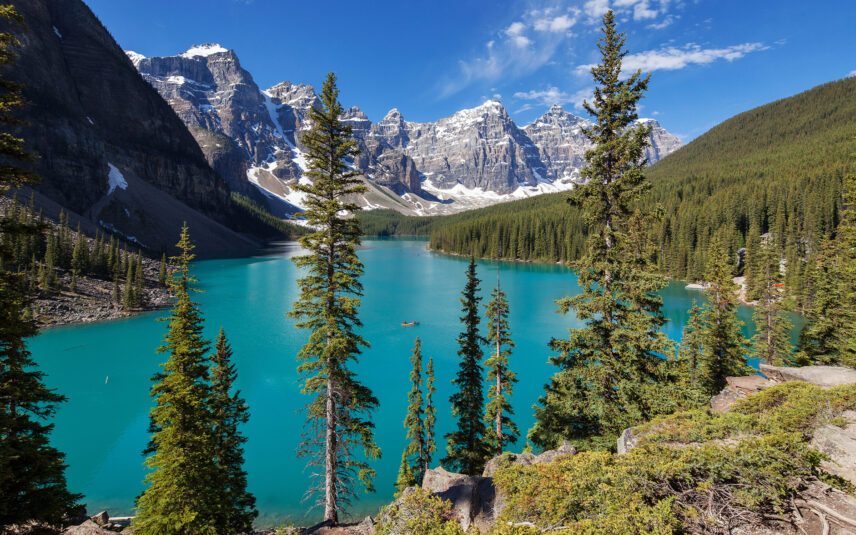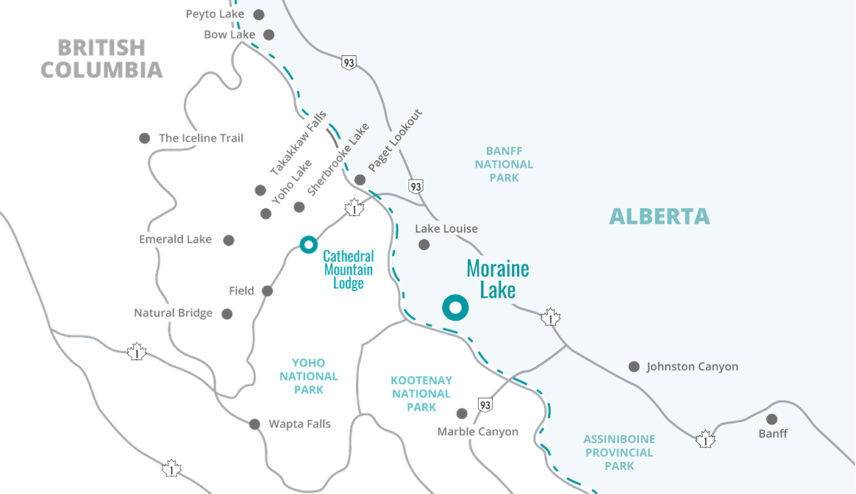Experience Must-See Destinations
At Moraine Lake Lodge, your Rocky Mountain accommodation lies perfectly between Lake Louise in Banff National Park and Yoho National Park, and right in the middle of everything the area has to offer. Canoeing Moraine Lake and hiking the surrounding trails are the must-do’s when staying at our Lodge, but Banff National Park offers numerous breathtaking trails and activities that each provide a truly unique experience.
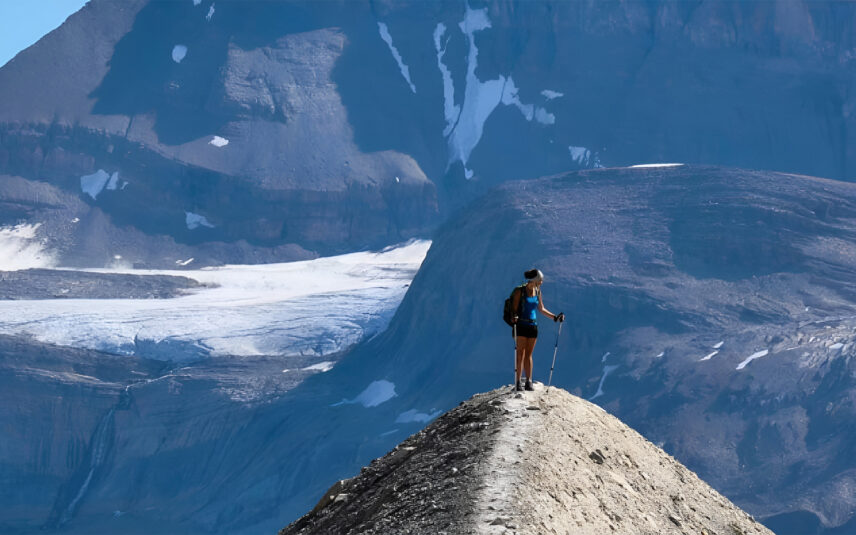
Rocky mountain activities
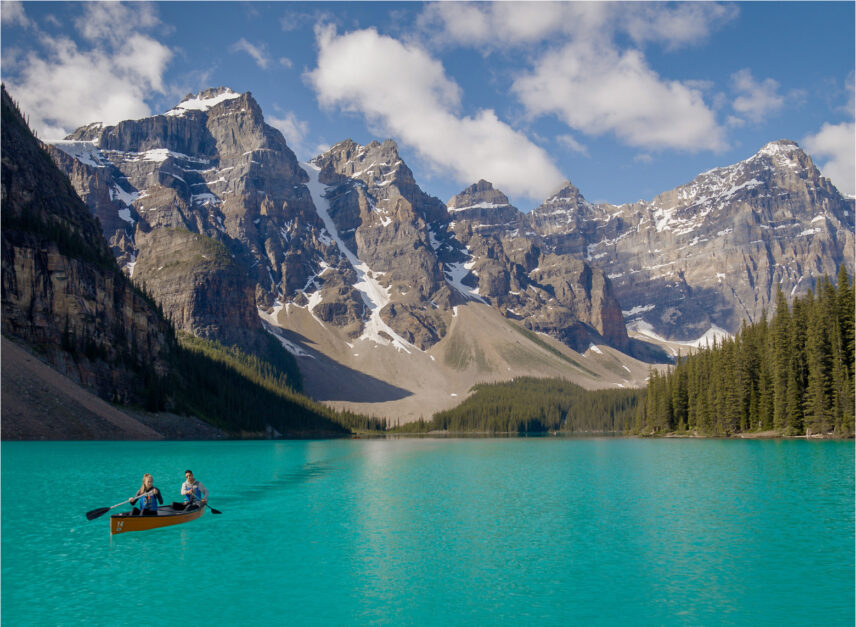
Canoeing on Moraine Lake
As a guest of the Lodge, enjoy a complimentary canoe trip across the sparkling crystal waters of Moraine Lake and back.
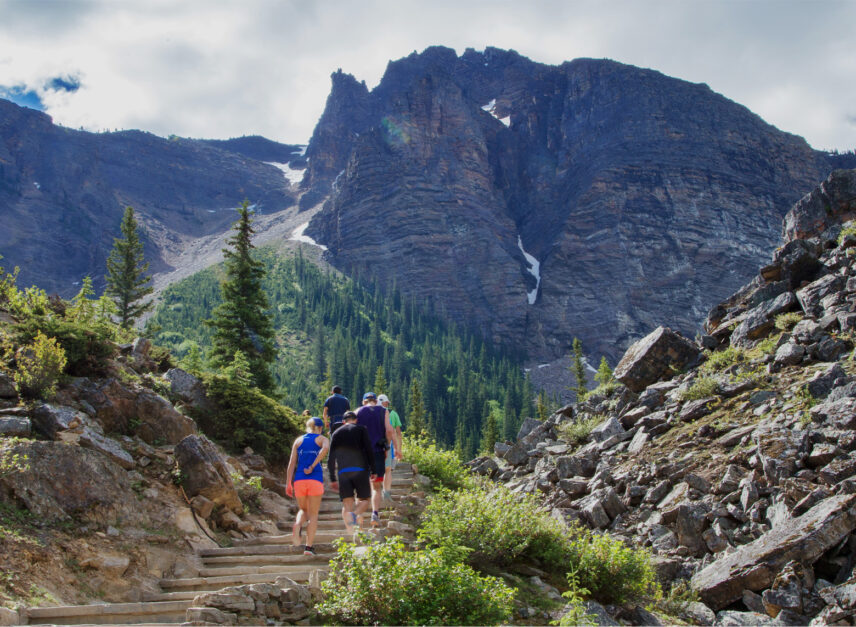
Hiking
Explore the Valley of the Ten Peaks, following trails that wind through rich alpine forests below towering peaks and glaciers.
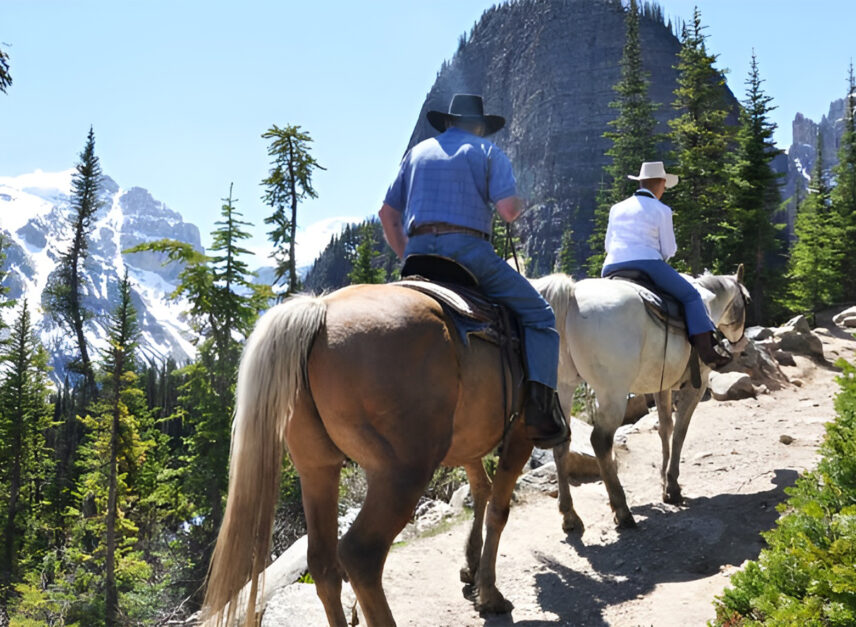
Horseback Riding
Traverse the majestic Rocky Mountains on horseback. From Lake Louise, you can take a one-hour trail ride, or spend the day in the saddle galloping beneath snowcapped peaks along the Timberline Trails around Lake Louise.
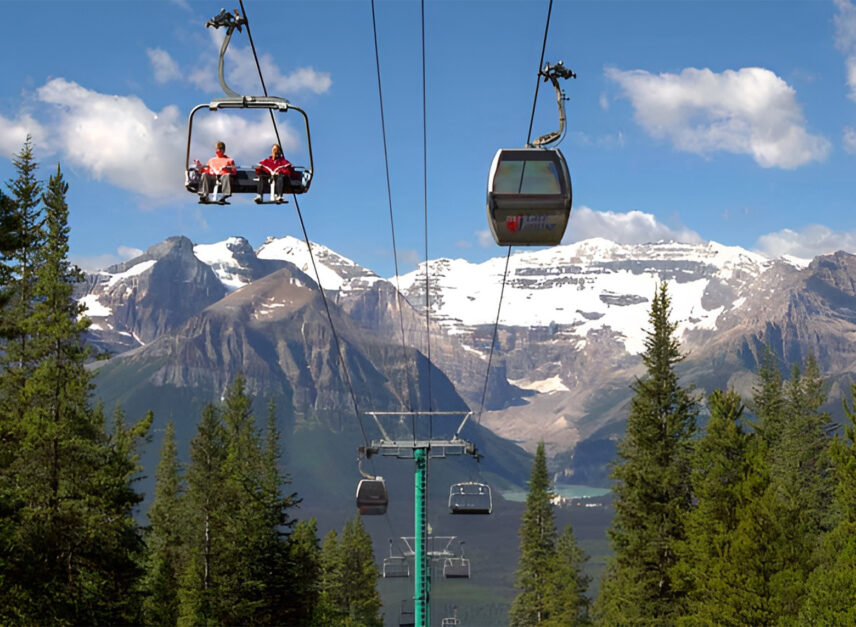
Lake Louise Gondola
Ascend to one of Banff National Park’s greatest mountain viewpoints. The Lake Louise Sightseeing Gondola & Wildlife Interpretive Centre offers a unique opportunity for guests to view grizzly bears feeding on berries that grow on the ski run below.
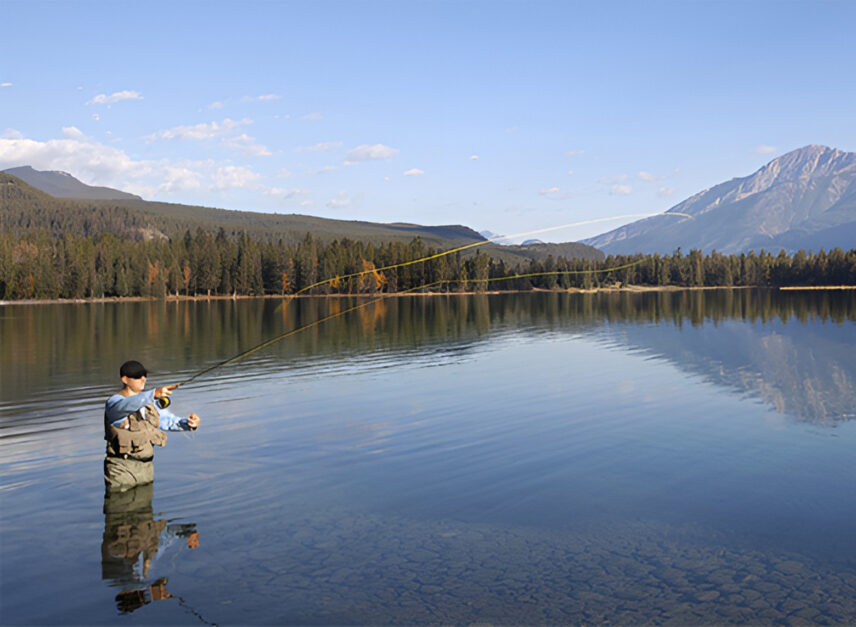
Fishing
Experience fishing like never before. Fish at the lakes, go on an excursion or if you’re looking for something more exciting, join a helicopter fishing tour with Rockies Heli.
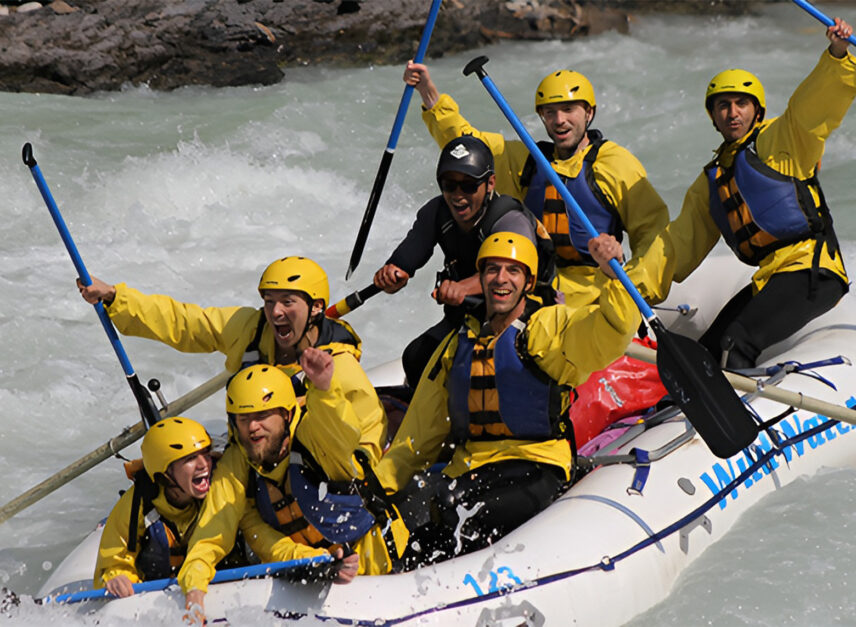
River Rafting
There’s no shortage of adventure here in the Rockies, and river rafting is one of the most exciting things to do in Banff. Our white water neighbours, Wild Water Adventures, offer a wide range of trips down the Kicking Horse River.
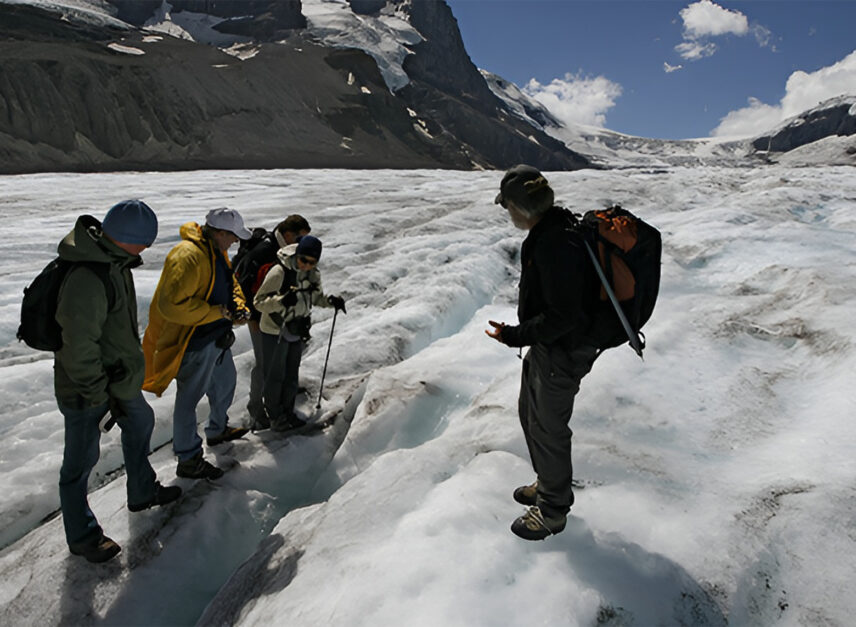
Glacier Tours
Join a Glacier Icewalk for a guided Athabasca glacier tour. Offering stunning views of the Columbia Icefield in the Canadian Rockies and Jasper National Park, Athabasca Glacier is a “must see” on any visit to the Canadian Rockies.
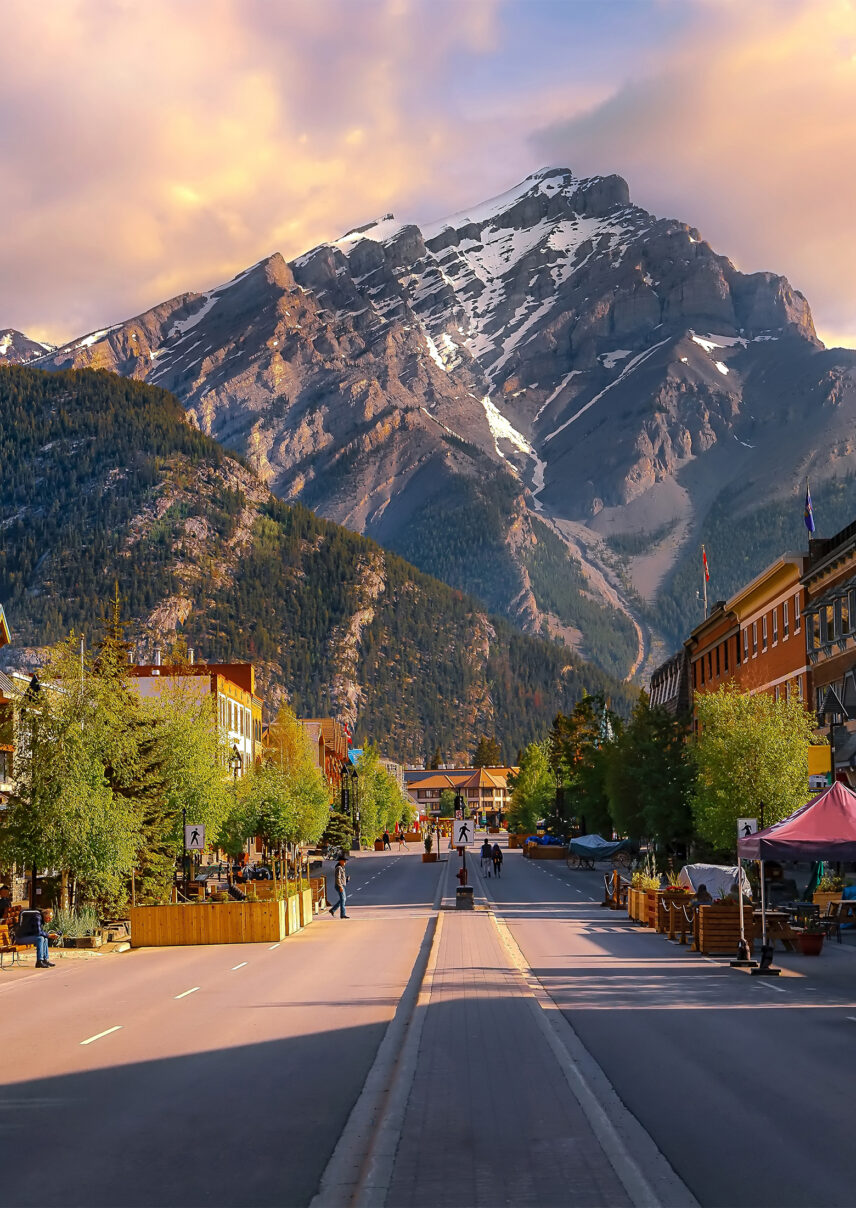
The Beauty of Banff
Known around the world for its picturesque landscapes and natural playgrounds, Banff is one of Canada’s greatest destinations to find adventure. It’s the first national park to be established in Canada, and thanks to iconic destinations like the Cave and Basin History Site, it’s also the most visited.
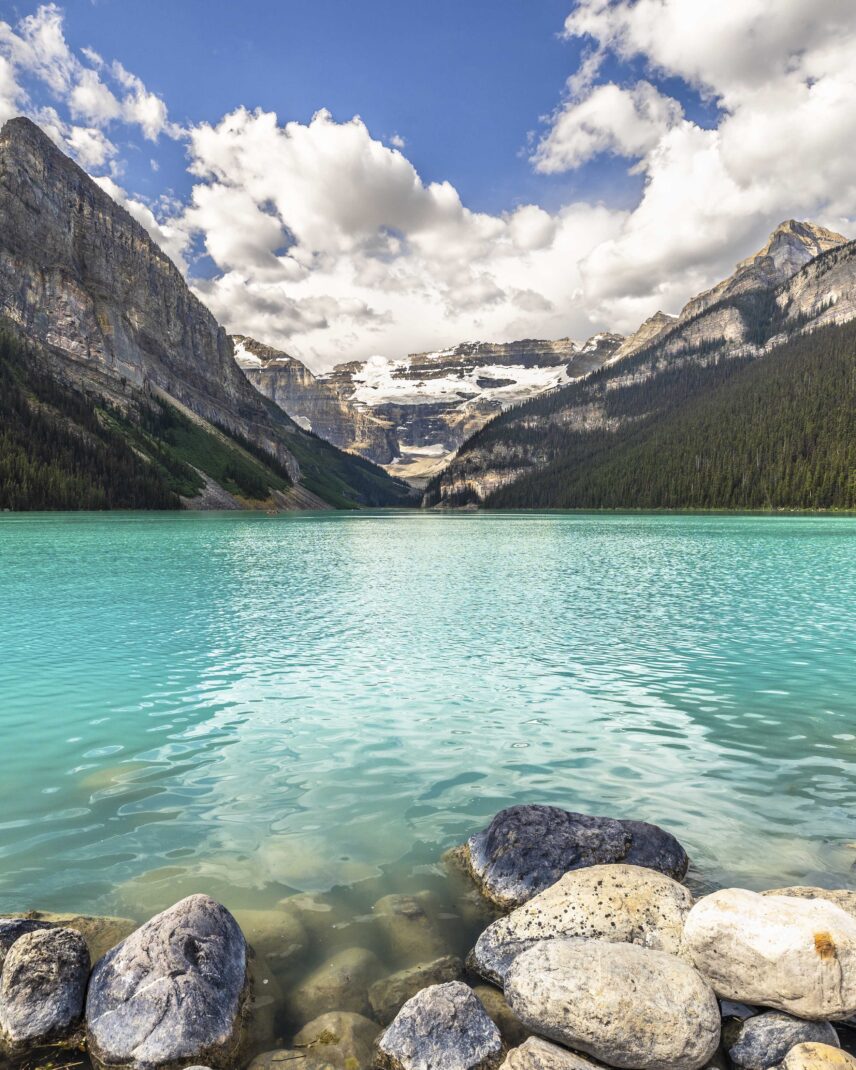
Striking Lake Louise
A glacial lake located in Banff National Park, Lake Louise is named ‘Lake of the Little Fishes’ by the Stoney Nakoda First Nations people. During the summer, there are a variety of hiking trails by the lake as well as mountain biking and horseback riding. Fairmont’s Chateau Lake Louise, one of Canada’s grand railway hotels, is located on the eastern shore.
and so much more
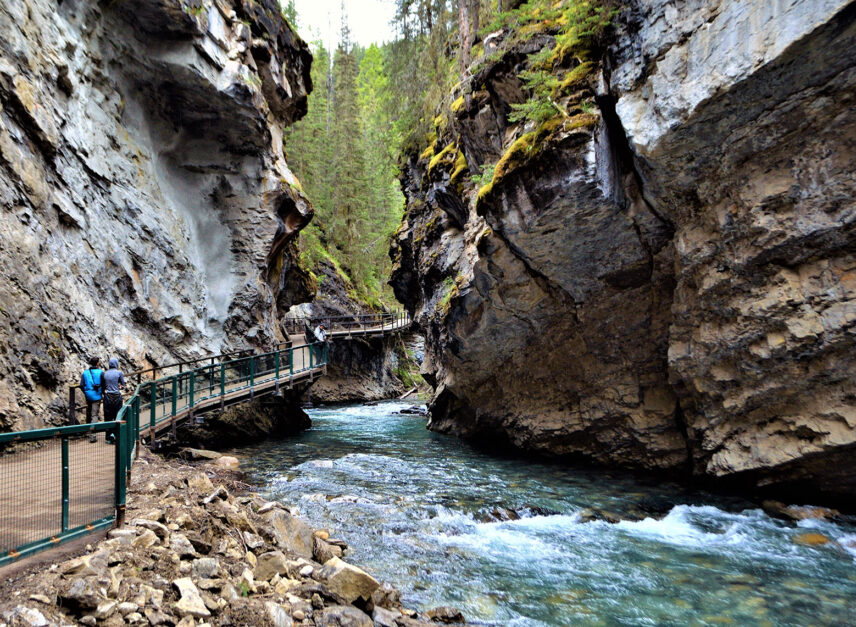
Johnston Canyon
Carved steeply into the limestone bedrock by thousands of years of water erosion, the dramatic Johnston Canyon is a must-visit natural attraction.
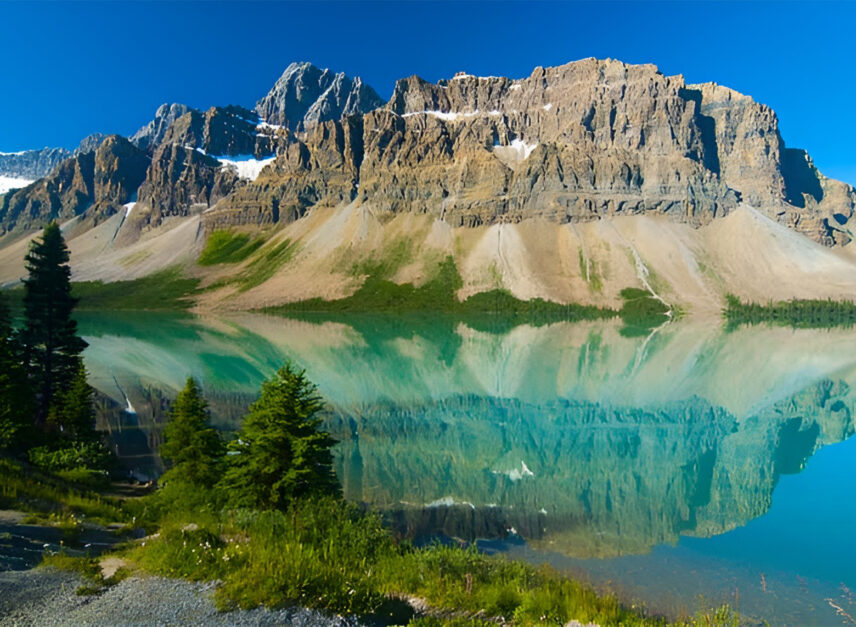
Bow Lake
One of the largest lakes in Banff, Bow Lake is also one of the most accessible. Its calm waters rest at the foot of Bow Summit, with amazing views everywhere you look.

Lake Agnes Tea House
Built in 1901 by the CPR, the Lake Agnes Tea House has served tea since 1905. Perched at 2,135 m on Lake Agnes, it’s a 7-km round-trip hike from Lake Louise. Still open today—cash only!
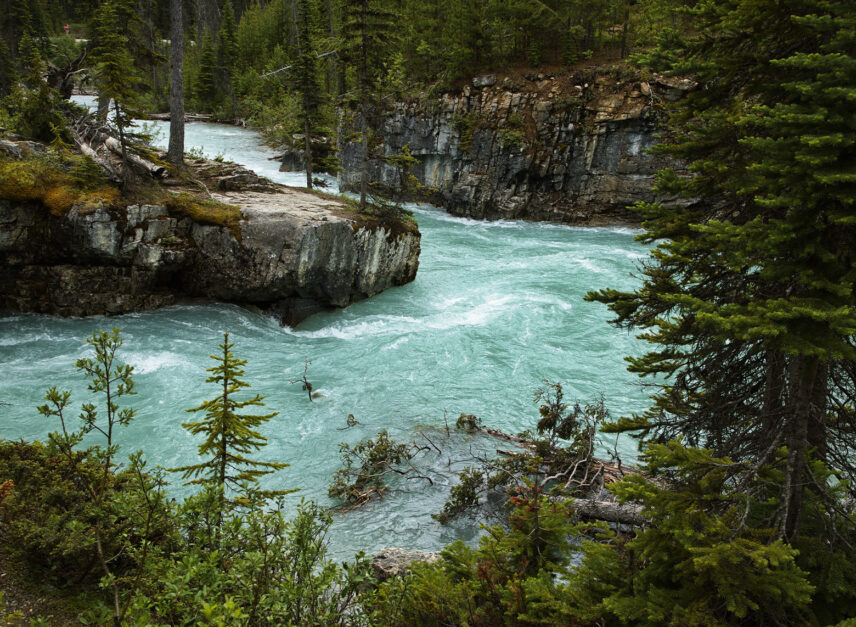
Marble Canyon
Located in Kootenay National Park, Marble Canyon is a quieter option to Johnston Canyon. An easy hike allowing all skill levels, it offers plenty of photo opportunities and rest stops along the way.

Columbia Icefields
This one-of-a-kind excursion will take you on an incredible journey from land to sky. Led by the Icefield Glacier Discovery Centre, you’ll travel to the largest glacier in the Canadian Rockies with thrilling sights to see every step of the way.
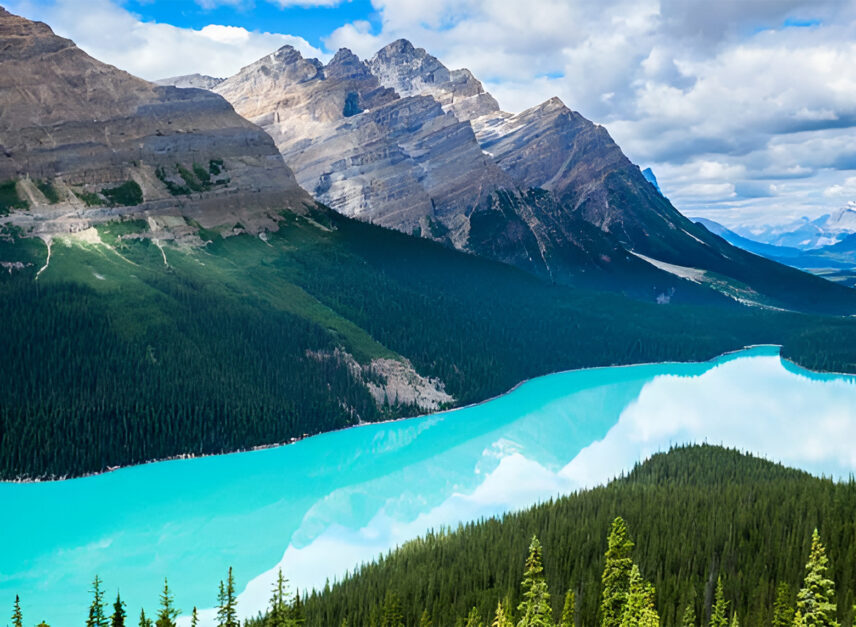
Peyto Lake (Bow Summit)
With gorgeous mountains all around, you can hike to the Peyto Lake viewpoint on the upper self-guided nature trail.
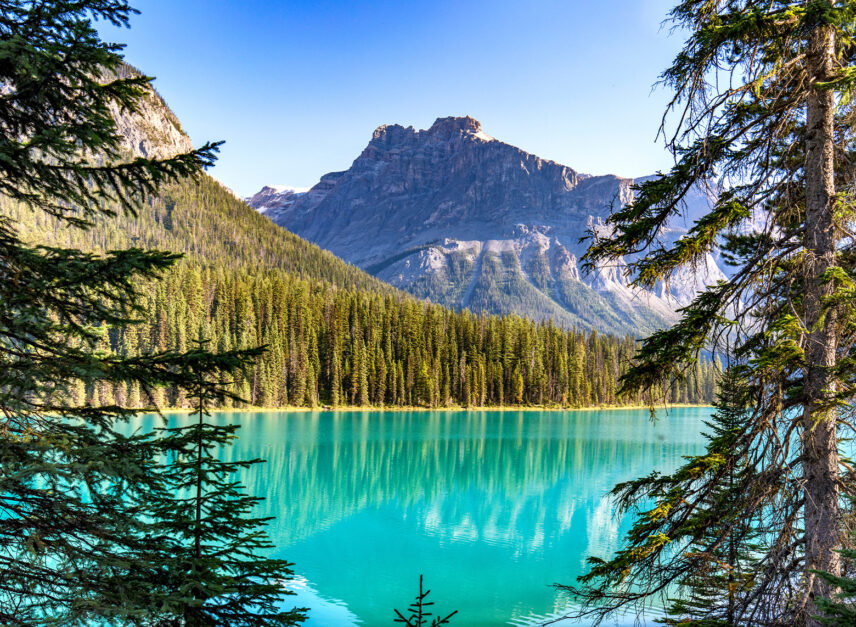
Emerald Lake
Of the 61 lakes found in Yoho National Park, Emerald Lake is the largest. And surrounding its stunning shores is an incredible 5.2-km trail filled with equally beautiful Canadian Rocky Mountain views.
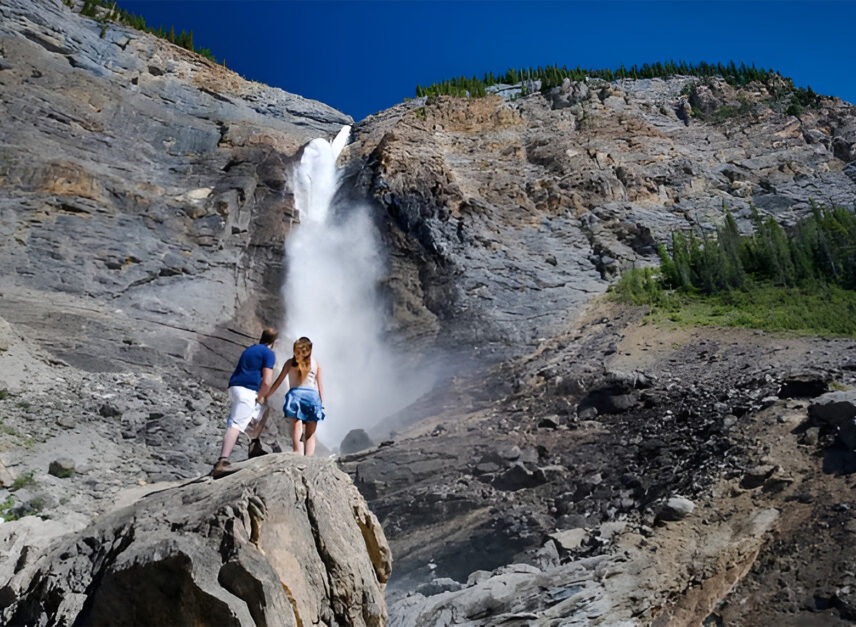
Takakkaw Falls
Towering 1,260 feet above the river below in Yoho National Park, Takakkaw Falls is one Canada’s highest and most stunning waterfalls. The hiking trails leading to its crashing white waters are unequivocally beautiful and easily accessible. They’re only open from mid-June until mid-October, so see them while you can.

